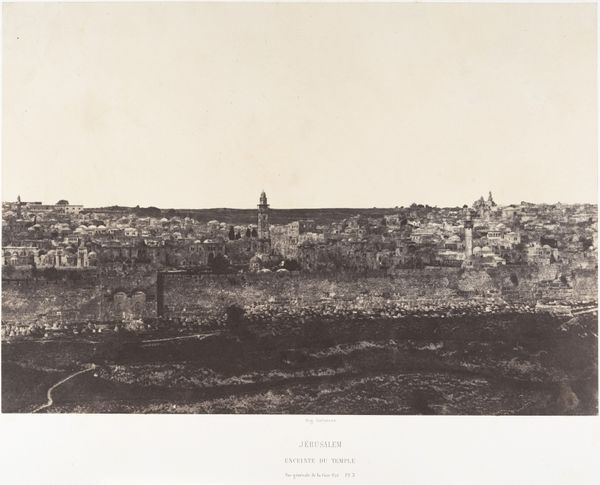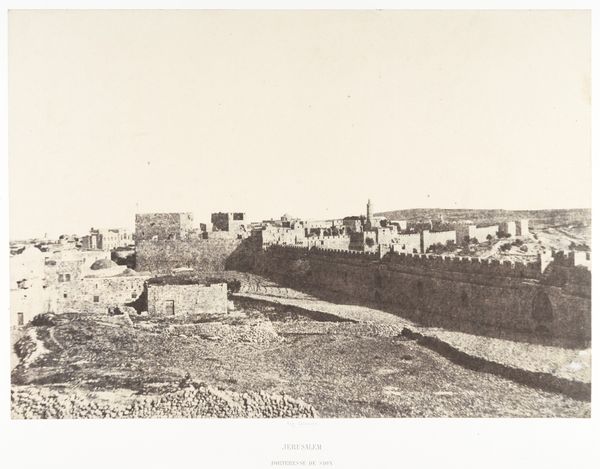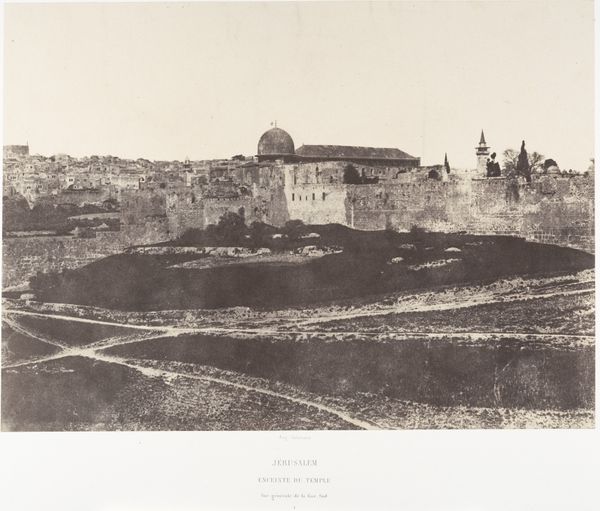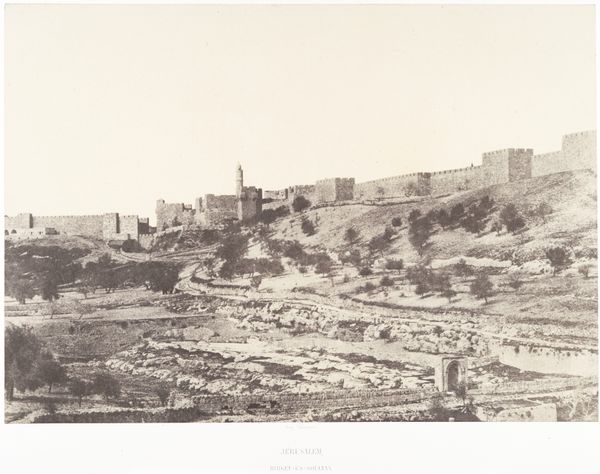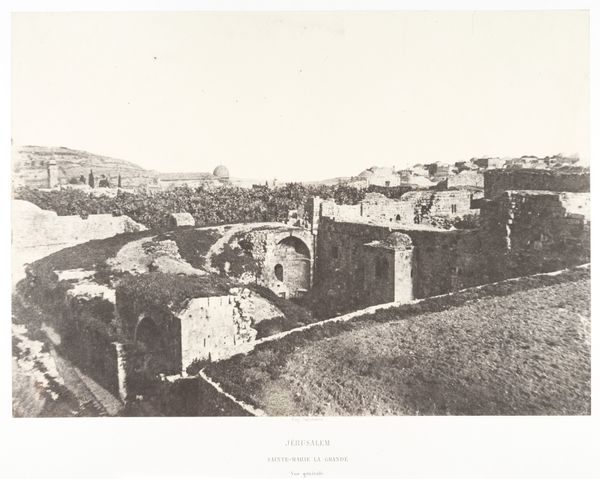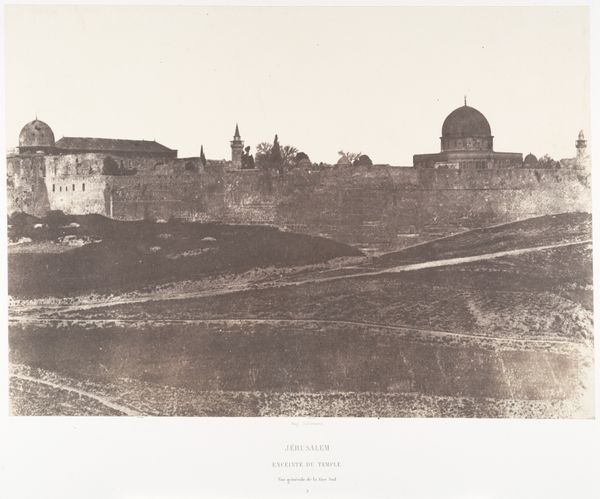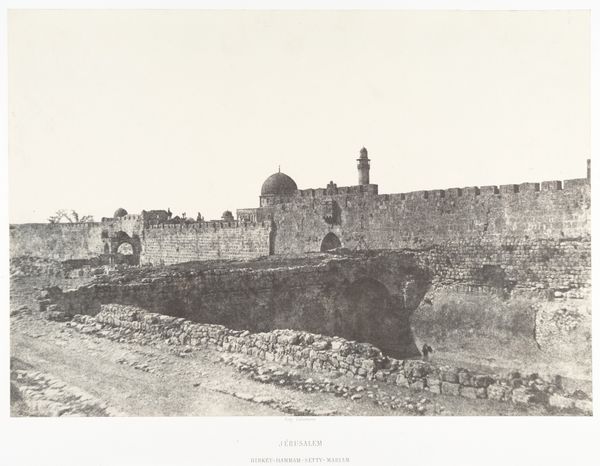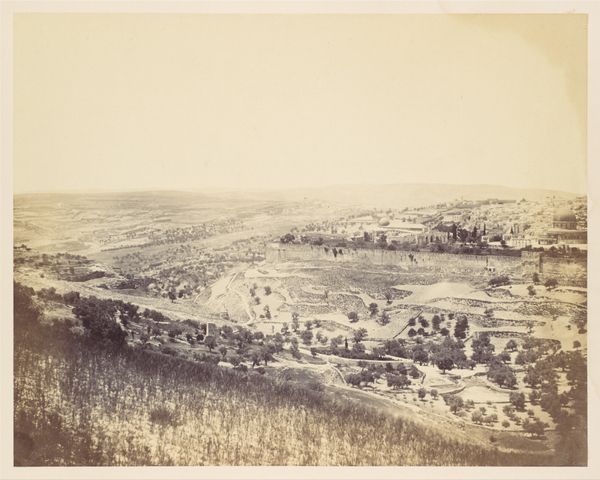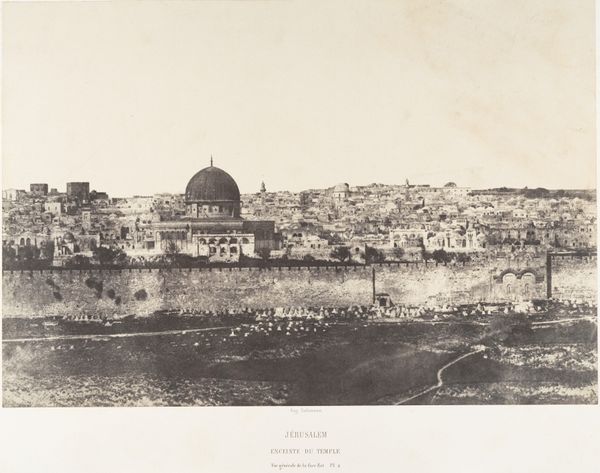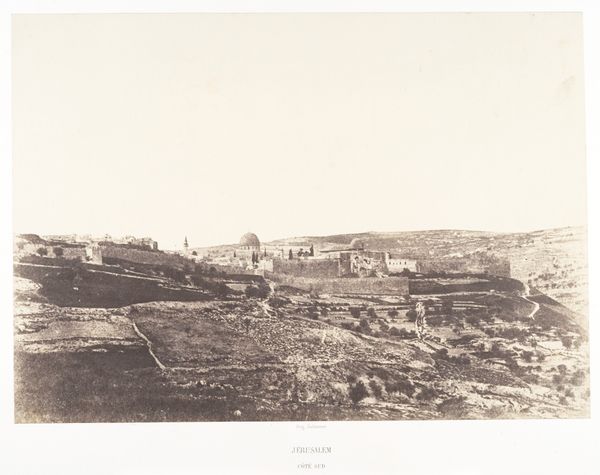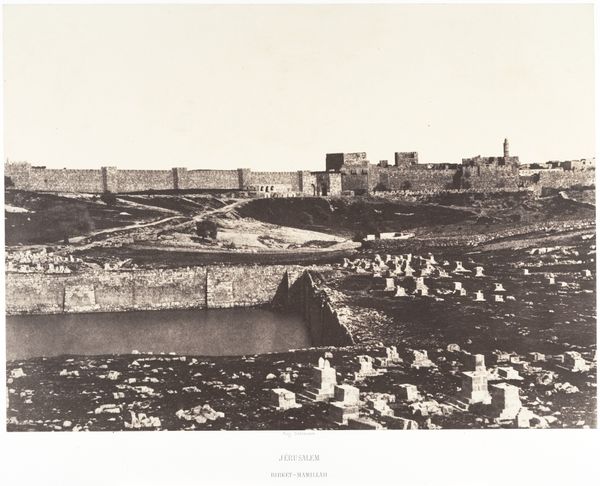
Jérusalem, Enceinte du Temple, Vue générale de la face Est, Pl. 1 1854 - 1859
0:00
0:00
photography, albumen-print
#
landscape
#
photography
#
ancient-mediterranean
#
cityscape
#
islamic-art
#
albumen-print
Dimensions: Image: 23.1 x 31.8 cm (9 1/8 x 12 1/2 in.) Mount: 44.5 x 60 cm (17 1/2 x 23 5/8 in.)
Copyright: Public Domain
Editor: So, this is Auguste Salzmann’s “Jérusalem, Enceinte du Temple, Vue Générale de la face Est, Pl. 1,” an albumen print dating from between 1854 and 1859. It’s quite striking how the walls of Jerusalem dominate the foreground. What significance do you see in that visual choice? Curator: The prominence of the wall speaks volumes. Photography at this time was heavily shaped by colonial and orientalist desires to document and "capture" the East. The photograph becomes an act of possession. How do you think an image like this participates in broader European projects during that period? Editor: Well, I guess showing Jerusalem as this ancient, walled city, almost frozen in time, might reinforce a sense of Western progress and modernity by comparison. A sort of visual othering? Curator: Exactly. Salzmann, commissioned to document biblical lands, provides a visual inventory, reinforcing European authority. His supposedly objective images are laden with ideological implications. It isn't just about documenting a city; it's about framing a narrative of power. Notice how the light seems to emphasize the starkness of the wall; is this a neutral depiction, do you think, or is the choice itself charged with intention? Editor: That's true, the lighting does create a feeling of harshness, almost like an imposing barrier. It’s interesting how photography, often seen as objective, can be so easily manipulated to tell a certain story. I hadn't considered the political implications so directly. Curator: Precisely! The camera, while seeming to record faithfully, also shapes perception, reinforcing cultural assumptions and power dynamics. This photograph shows how intertwined art, politics and history really are. Editor: I'll definitely look at photography from this period differently now. Thanks for pointing out those aspects! Curator: It’s a good reminder that looking at art means also looking at the society and power structures around its creation and viewing.
Comments
No comments
Be the first to comment and join the conversation on the ultimate creative platform.
